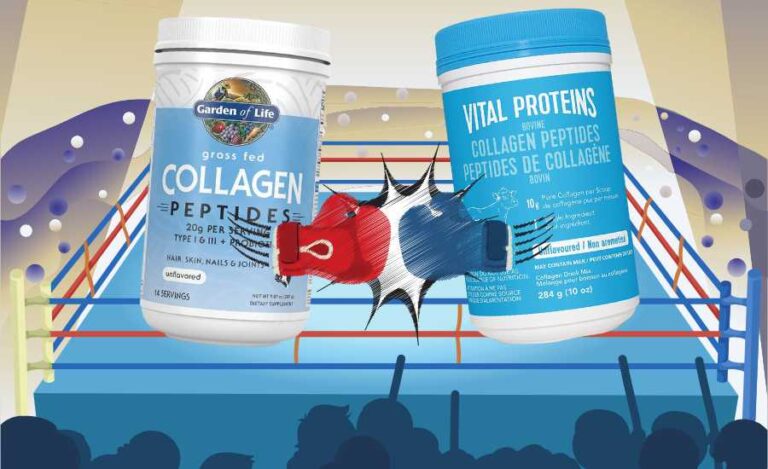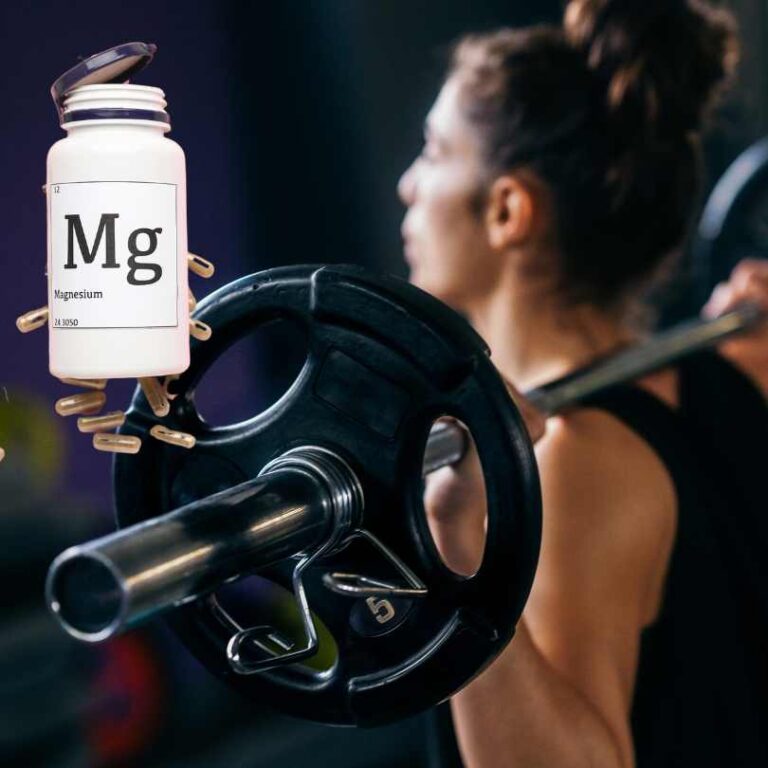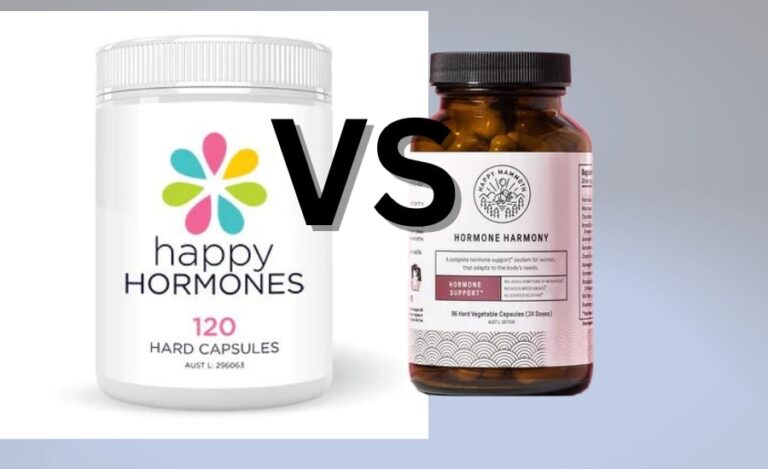If you clicked on this blog article that means you are most likely already going to the gym or doing some form of weight lifting. Or you are about to take a plunge into the world of iron. But you might be concerned about a few things such as your joints, hormonal changes, maybe even excess belly fat that won’t budge, and whether or not you are making the most of your weight training routine. So as a personal trainer of coaching women for 15+ years, mostly women in their 30s, 40s, and 50s, I want to share with you my best tips for weight lifting during menopause.
My Top 10 best tips for weight lifting during perimenopause & menopause.
Benefits of weight lifting during perimenopause.
Tip 1. Don’t be afraid to lift heavy, you are not a fragile old lady.
Tip 2. Eat enough quality protein.
Tip 3. Eat enough good fats, but watch the calories.
Tip 4. Don’t skip the carbs, you need them for muscle growth.
Tip 5. Get the right supplements to support your recovery.
Tip 6. Create good habits to improve sleep. (my secret weapon revealed)
Tip 8. Improve your pelvic floor strength.
Tip 9. Joint and connective tissue health – mobility exercises.
Tip 10. No negative self-talk, mindset matters – you are NOT getting old!
Main benefits of lifting during perimenopause.
It’s no secret that regular exercise can help alleviate symptoms of the menopause transition, aka perimenopause. But clinical trials and many studies have shown that weight training in particular becomes of the most importance during that stage of our lives.
It really is a game-changer and will determine how well you age, naturally. Resistance training (not just body weight), but with weights, has many benefits aside from looking toned and lean, below are a few to name;
- Increase in muscle strength – great for day-to-day tasks and confidence boost.
- Reduction in body fat – if you carry some excess fat you will find weight training can help speed up weight loss and tone the area.
- Improved metabolic rate – the more muscles you have in your body the more effectively you burn fat, even at rest.
- Increased bone density – your bones actually rebuild and become tougher and a lot harder to fracture or break.
- You may notice a reduction in hot flushes severity or frequency or even dodge them altogether.
- Improved mental health.
- Increased energy levels.
- If you suffer from high blood pressure weight training can help reduce it.
- Physical activity can help regulate your estrogen levels.
- Reduce mood swings.
- Improve overall quality of life.
Tip 1. Don’t be afraid to lift heavy, you are not a fragile old lady.
Do you have to lift heavy weights to stay youthful and fit? No. Can you if you want to? You bet.
If you don’t have any past injuries or medical conditions that prevent you from lifting heavy, there is no other reason that should stop you. Age is not a reason to lift light weights.
I am currently coaching clients in their 60s who are squatting their own body weight with a barbell on their backs. As long as they can master good form and have all clear from their doctor to do so. It makes them feel empowered, able, and tough.
In fact, some women I coach in their 60s can lift heavier weights than their kids (who obviously don’t focus on strength training). But, it goes to show, that just because you are young, doesn’t mean you are automatically fit and strong and vice versa.
What happens when you engage in weight-lifting activities during perimenopause?
When you lift weights, especially heavier weights, not only do you increase lean muscle mass but also increase bone mass which can help you delay or reduce symptoms of osteoporosis that unfortunately happens as we age. Most types of strength training exercises can help with muscle tone, bone health and even help reduce menopause belly. But lifting heavier will help achieve this even more and propel results.
According to Dr Stacey Sims, an exercise physiologist, you need that strong stimulus to maintain muscle as your hormone levels fluctuate and decline. In her article, she talks about how weight lifting during perimenopause can be instrumental in improving your body composition, reducing fat mass, and increasing lean mass. I myself as a coach witnessed this with my perimenopausal clients over the years.
Being in your 40s doesn’t mean you have to go light, but you should work on constantly improving your form and joint mobility, which I will discuss in tip 9.
Tip 2. Eat enough quality protein.
This goes without saying, eating good quality protein can make or break your efforts in the gym. If you lift weights, try to aim for around 1.5g of protein per kg of body weight at a minimum.
This will help promote recovery, get enough essential amino acids into your body and promote overall health.
This is what roughly 100g of protein per day looks like in macros.
Sometimes it’s tricky to get all that protein from food especially if you are not a big meat or chicken eater or a vegetarian, in that case, some help of protein powder or clear whey protein water can help you hit the target for the day.
Tip 3. Eat enough good fats, but watch the calories.
You probably heard that eating nuts, seeds, and foods rich in omega 3 & 6 can be very helpful for perimenopause and menopause. This means things like fatty fish, seeds, nuts, olive oil, avocado oil and the like can be a good idea to include in your diet.
But don’t forget that fat is the higher in calories macro compared to the other 2, carbs and protein. There are 9 calories per 1g of fat. Which means 10g of fat is as much as 90 calories.
While having good fats in your diet can be helpful for reducing some menopausal symptoms, fats can stack up fairly quickly in caloric intake for the day. So moderation is key here.
Prioritizing protein, with the addition of a small number of healthy fats, and a moderate amount of carbohydrates with each meal can help you improve your energy levels and support you during training.
Tip 4. Don’t skip the carbs, you need them for muscle growth.
In my humble opinion as a strength training coach, I believe in balanced macros regardless of age. Your body prefers carbs as a main source of energy when it comes to lifting weights so going in the direction of the ketogenic diet isn’t optimal if increasing lean muscle mass is important to you.
I am not saying you can’t build muscles on keto, I am just saying that most weight lifters including myself don’t do it, and there is a good reason for it.
Myth; you need to cut carbs down significantly as you get older otherwise you will store belly fat.
Truth: this may only be helpful in reducing body fat if you are sedentary and don’t exercise, if you lift weights things are different.
Tip 5. Get the right supplements to support your recovery.
Although supplements are not necessary if the budget doesn’t allow for it, and yes you can get all the nutrition you need from a healthy diet.
However, you would need to be super disciplined with prepping balanced meals daily, ensuring you get enough of everything you need for good recovery from exercise and better aging.
Often this can be challenging if you are a busy person trying to balance work, kids and healthy life all at once. This is when getting some help from good supplementation like glucosamine and collagen for joint and connective tissue health, and protein powder can make a difference.
Tip 6. Create good habits to improve sleep. (my secret weapon revealed)
I know this one is difficult, especially for those who might have always suffered from insomnia or anxiety or those who have young kids.
My secret weapon is Magnesium Glycinate (I know nothing new, I am sure you have heard of magnesium for sleep), but bear in mind not all of them are equal.
There are 8 different types of magnesium suitable for different purposes, some are better for active women who work out than others, and some can give you diarrhea. Check out my article on magnesium right here to understand which type is best for you.
Tip 7. Cut down on alcohol.
Sorry my lovelies, I know, I know. (sad face).
Despite the popular belief that red wine is rich in antioxidants, the negative effect of regular consumption of alcohol outweighs any benefits that the minuscule amount of antioxidants it may deliver to benefit our body.
Whilst you don’t have to completely say goodbye to your favorite glass of Sav Blanc or Prosecco, make it less frequently and less of it. Drink it occasionally for enjoyment with food and company. I suggest you make it a special occasion thing if you want to age well and have not only good internal health but also healthy and youthful skin.
According to Dr Khan in the HCF article, the liver may eliminate alcohol more slowly. “This delays it from breaking down the hormones that are fluctuating at midlife. The knock-on effect can lead to more intense menopausal symptoms such as hot flushes, night sweats, headaches, sleep disturbances, and mood changes.”
Tip 8. Improve your pelvic floor strength.
This is important, don’t skip this step even if you think you are ok.
Sadly in my years of coaching women, I found this often slips through the cracks until it’s too late.
I have coached women who have had pelvic floor surgeries or had severe pelvic prolapses in their menopause years. As a result, they were prohibited from lifting heavy weights by their doctor.
Although pelvic floor prolapses may not always be prevented, in many cases pelvic floor health and strength can be improved. Understanding how the pelvic floor works and doing simple exercises are not complicated, but very important.
I urge women to check with women’s specialist physio after giving birth to each child as well as during menopause years. Our pelvic floor muscles can weaken and result in serious prolapses.
Having it checked with your doctor or women’s physio is a great way to find out the condition of your pelvic floor. And whether there are some simple exercises you need to do, to improve the strength of your pelvic floor. Then you can commence weight lifting exercises with a piece of mind, even if you just plan on using free weights like dumbbells.
Check out some helpful tips on Jean Hailes’s resource site here about pelvic floor health. https://www.jeanhailes.org.au/news/pelvic-floor-health-101-tips-to-improve-bladder-control
Tip 9. Joint and connective tissue health - mobility exercises.
Often we lift weights for strength, aerobic exercise for heart health and to maintain a healthy weight, but we forget our joints. Our joints need different approaches to just basic stretching exercises or typical weight or cardio exercises.
We need to constantly work on our ROM (Range of Motion), otherwise, our joints become stiff and limited in movement. Leaving us feeling immobile or not as mobile as we used to. No, this is not due to age, this is due to a lack of correct exercises specifically for your hip, shoulder, knee, and ankle joints.
Taking collagen and glucosamine can help support your joints and connective tissue along with regular mobility exercises.
Mobility routines don’t have to be long. Around 10 minutes a day 3-4 days a week minimum, of some rotation exercises, pushing each time a little further. I recommend to do a 10 minute joint mobility routine before each strength workout.
This is what my workout usually looks like, 4 times per week;
- 10 mins joint mobility and strengthening exercises, challenging myself more each week (for example; opening up my hips wider, going down into a body weight squat lower, stretching out my shoulder joints and trying to connect my fingers on both hands behind my back).
- 30-40 minutes of strength workout, longer if I am preparing for competitions. Body part split. 2 lower body days, 2 upper body days.
- 20 minutes of cardio on an incline treadmill, only on upper body days. No cardio on lower body days.
- 10 minutes stretching muscles, focus on hamstrings, glutes, and back.
2 days per week I walk around 5km for my active recovery.
Tip 10. No negative self-talk, mindset matters - you are NOT getting old!
Although I put it at the end, it’s actually the beginning of all beginnings. If you have the right mindset you will succeed and overcome all obstacles. Stop telling yourself you are too old or too sore or too tired or stiff. All of these things are due to a lack of the right program and correct exercises. Not because of age. You can be fitter and stronger than you ever were in your 40s, 50s, and well beyond. Many of my clients are living proof of that. So let’s leave the pity party and pick up that barbell.
Follow these 10 tips and make some lifestyle changes now, because it’s never too late to start and healthy lifestyle.
And if you need any help at all just drop a comment or question below and I will do my best to respond in a timely manner otherwise you can contact me at liv@strongandyouthful.com.au





